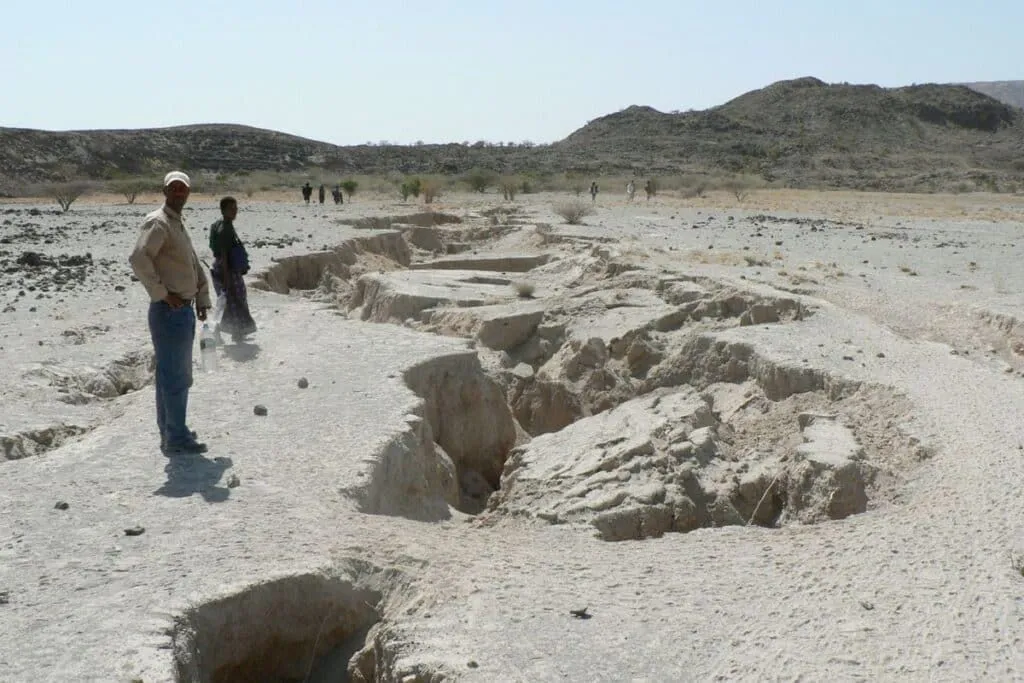The East African Rift System: A Continental Split
The East African Rift System is a network of connected fractures stretching over 6,000 kilometers from the Afar region in the north down to Mozambique in the south. It marks the early stages of a continental split as tectonic forces pull different parts of Africa apart. Countries such as Ethiopia, Somalia, Kenya, and parts of Tanzania are at an important turning point where three tectonic plates meet: the Somali, Nubian (African), and Arabian plates.
This tectonic activity builds tension in the Earth’s crust, leading to volcanic eruptions, earthquakes, and the formation of deep valleys. And it isn’t just a slow movement—events like the series of earthquakes in 2005 that opened a 60-kilometer-long fissure in western Ethiopia in just minutes demonstrate how fast things can change. That quick split caused a two-meter gap, a shift that geologists once thought would take centuries.
A New Ocean on the Horizon
As these tectonic plates continue to drift apart, they’re setting the stage for an amazing geological change: the birth of a new ocean. According to geologist Gilles Chazot, oceans form when continental masses break apart and separate. Over time, seawater from the Red Sea and Indian Ocean will seep into the widening gap, effectively turning the Horn of Africa into an island separated from mainland Africa by this fresh ocean basin.
Looking ahead, parts of Ethiopia, Somalia, Kenya, and possibly Tanzania will develop new coastlines. These new shorelines are expected to stretch from the Afar region near the Red Sea all the way down to Kenya, and maybe even along Tanzania’s border. The Horn of Africa is slowly drifting from the continent at rates measured in mere millimeters to centimeters each year.
Strategic Significance and Scenic Wonders
This region holds an important position in global trade. The Horn of Africa—including countries like Djibouti and Somalia—sits at a key crossroads right by the entrance to the Red Sea and the Suez Canal. Changes here can shake up international shipping routes, making the area a hotspot for maritime activity.
Plus, this geological marvel is part of the famed “Great Rift Valley,” which boasts stunning landscapes filled with deep valleys and towering volcanoes, including Mount Kilimanjaro—Africa’s highest peak. These dramatic natural features remind us that the Earth is always on the move, continuously evolving in ways that both dazzle and challenge us.
Earth’s Ever-Changing Landscape
This ongoing process is a clear sign of how active and ever-shifting our planet is. It’s constantly reshaping itself, with new oceans forming where continents were once joined. For people living in or near places like Ethiopia, Somalia, Kenya, Tanzania, Djibouti—or for those connected to worldwide trade routes passing through regions like Djibouti or Somalia—the changes are vast and complex, yet truly fascinating.
As we watch these transformations unfold, whether through satellite images or firsthand accounts, we’re reminded of the incredible power of our planet and the persistent adaptability of life in the face of such natural shifts.
